Absa Cape Epic is one of those events you hear about but never plan on ever doing. From Nino Schurter to Henrique Avancini to Annika Langvad, there is never a shortage of heavy hitters in attendance. It’s one of those races that you dream of, sprinting off the same starting line with some of the most elite riders in the world. This year’s race was no different, with pros taking off 15 minutes ahead of us at the start of each stage. We knew they were sprinting away as we saw the helicopter pilots whisk back and forth and swing outward with jaw-dropping skills, which was, without a doubt, one of my favorite parts of the race to witness.
So what is the Absa Cape Epic? It’s a team event where pairs of two start, ride and finish every stage together. Year after year, the event follows different routes, with the 2021 running consisting of 8 stages, spanning 620 km (385miles), with 15,350 meters (50,360 feet) of vertical ascent. This race ended up including about every type of terrain, from sandy farm roads to vineyard trails, to steep loose rock ascents, to smooth single track roads to quick downhill gravel. After a while, we lost count of the number of sustained 20%+ grades on each stage. If there were a smooth dry route, the course would lead through a river or a 30′ mud bog, or multiples of each.
So what is the Absa Cape Epic? It’s a team event where pairs of two start, ride and finish every stage together. Year after year, the event follows different routes, with the 2021 running consisting of 8 stages, spanning 620 km (385miles), with 15,350 meters (50,360 feet) of vertical ascent. This race ended up including about every type of terrain, from sandy farm roads to vineyard trails, to steep loose rock ascents, to smooth single track roads to quick downhill gravel. After a while, we lost count of the number of sustained 20%+ grades on each stage. If there were a smooth dry route, the course would lead through a river or a 30′ mud bog, or multiples of each.
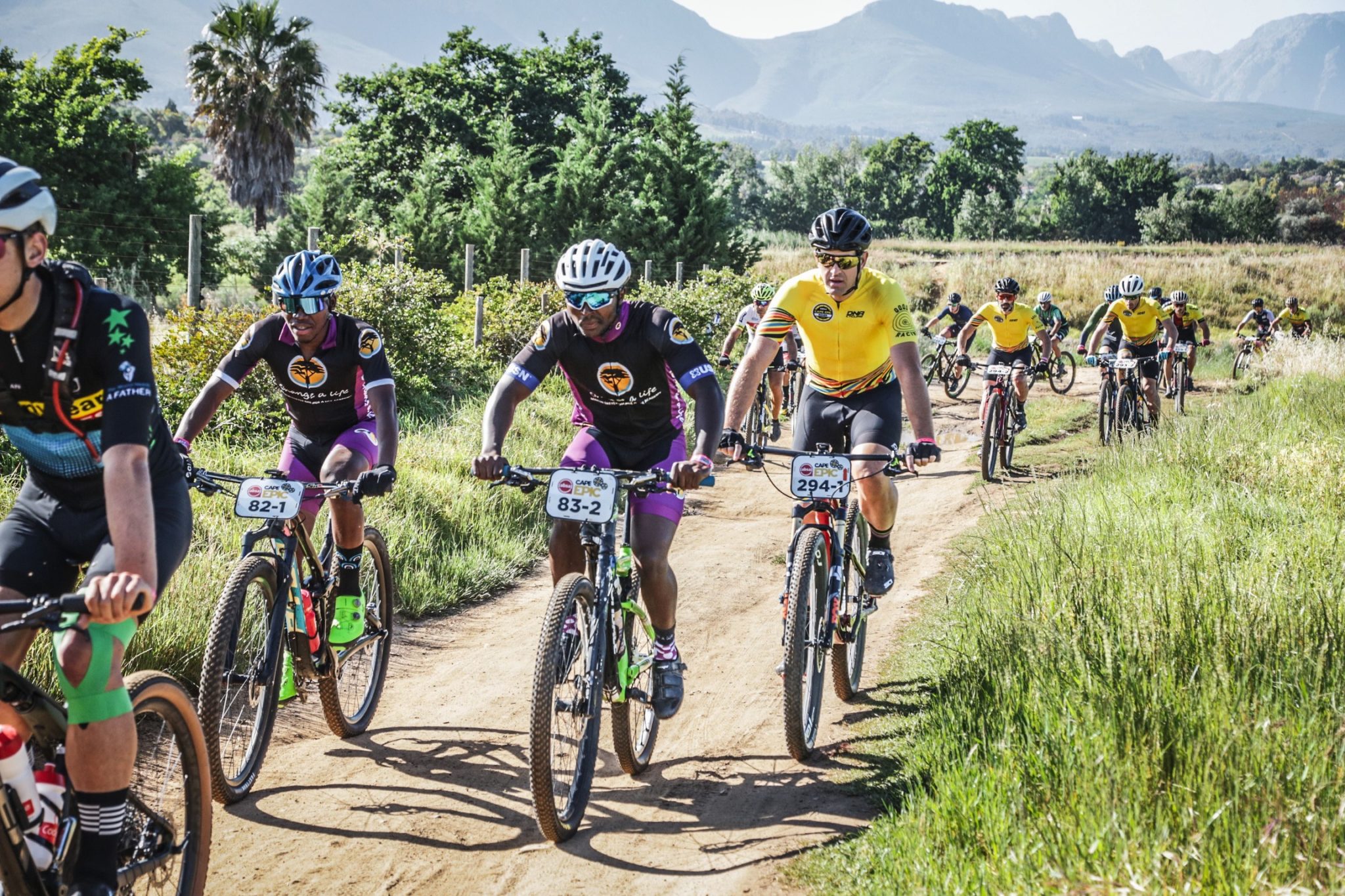
For several from our group, the race took longer than they had ever expected to finish. For some, it took two separate trips to South Africa to finally check this race off. Initially, Adam O’Farrell, Christian Sybrowsky, Matt Crowley, and Tom Hasleton all flew out in March of 2019 to participate in Cape Epic. Unfortunately, shortly after they set foot in South Africa, the Covid pandemic locked everything down and sent them headed back to the States without ever toeing the start line. They regrouped back in Utah and continued to train. It was then that I was adopted into the group, honored to become Adam’s teammate. Asked to join, I said, “100% in” without thinking what it all meant. Curt Doman and Jason Overbaugh also joined, becoming ‘heavyweights of the American QQQQ Team’, coined by the Cape Epic announcers.
The race started with a short prologue stage to rev up the legs. It took nearly an hour and positioned each team in the specific wave they would start in the subsequent day. The South African teams took great pride in the race, with their riders taking front and center at each stage for some prime camera time before returning back to join their start group. The camera crews swarmed from start to finish, with a palpable sense of pride in the air for the native teams representing their country – backing it up with fiercely skilled riders competing for the Absa African jersey.
The race started with a short prologue stage to rev up the legs. It took nearly an hour and positioned each team in the specific wave they would start in the subsequent day. The South African teams took great pride in the race, with their riders taking front and center at each stage for some prime camera time before returning back to join their start group. The camera crews swarmed from start to finish, with a palpable sense of pride in the air for the native teams representing their country – backing it up with fiercely skilled riders competing for the Absa African jersey.
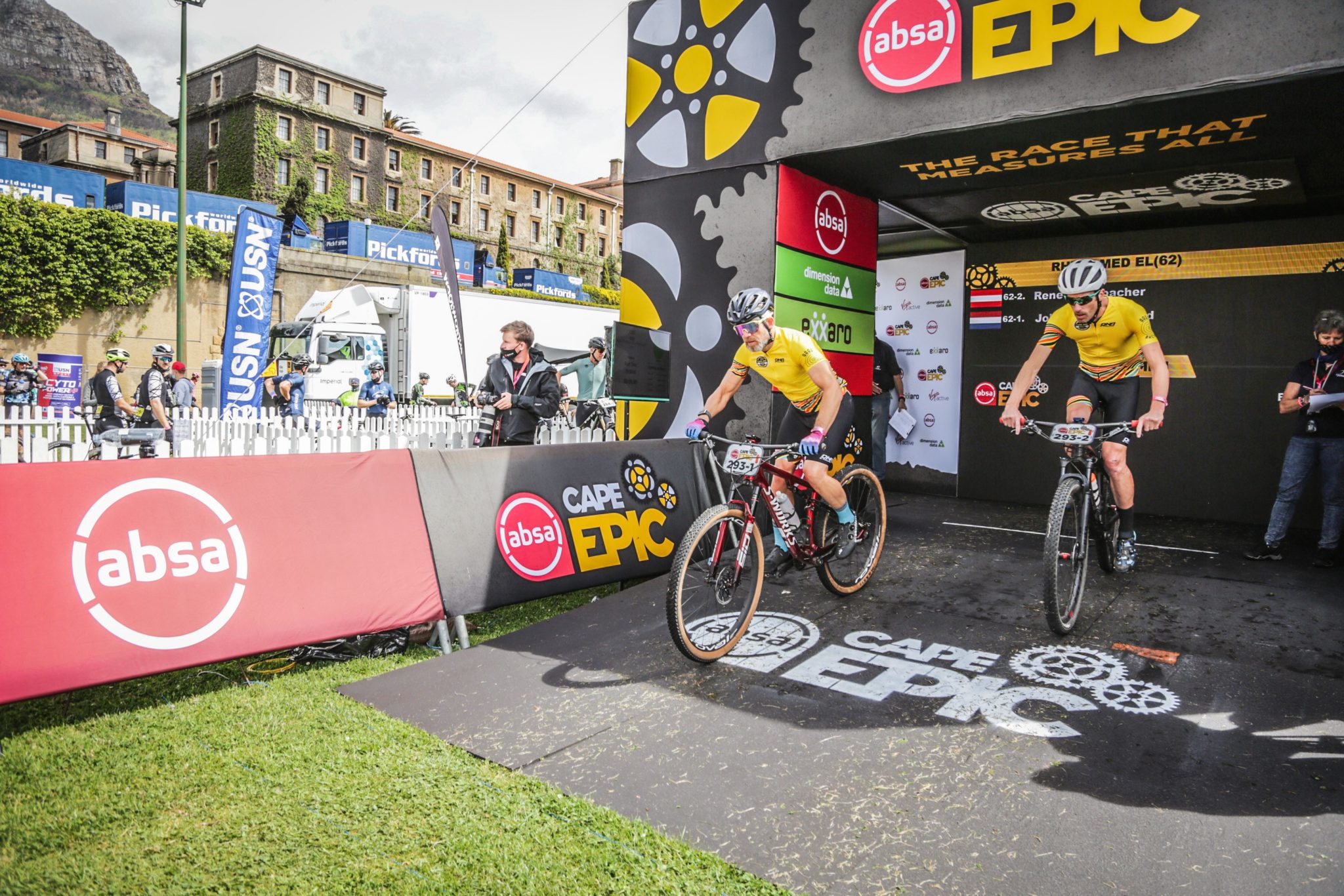
The suffering advanced through each of the 8 stages. Stage racing will make victims of those who push too hard at the beginning and then spit them out in the end. The trick is often to keep it steady and diesel-like. The difficult part was that each stage started with a mass sprint, with each team slogging through a river or mud bog in the first 5km of the race.
Looking back, I’m not sure why we ever lubed our chains or cleaned our bikes. The route would quickly make dirty work for both us and our bikes, especially the drive chains. The worst of them was Stage 6 to Wellington. Imagine 4 hours of riding through concrete mud! Eventually reaching the finish made for a huge celebration that stage 6 was over. I believe it rained nearly two inches overnight, with more rain falling that morning for good measure. What a stage – it put riding Utah’s True Grit stage in the mud to shame. Unfortunately, this stage did a number on most chains and drive trains. Luckily, we had a solid supply chain of parts available.
Looking back, I’m not sure why we ever lubed our chains or cleaned our bikes. The route would quickly make dirty work for both us and our bikes, especially the drive chains. The worst of them was Stage 6 to Wellington. Imagine 4 hours of riding through concrete mud! Eventually reaching the finish made for a huge celebration that stage 6 was over. I believe it rained nearly two inches overnight, with more rain falling that morning for good measure. What a stage – it put riding Utah’s True Grit stage in the mud to shame. Unfortunately, this stage did a number on most chains and drive trains. Luckily, we had a solid supply chain of parts available.
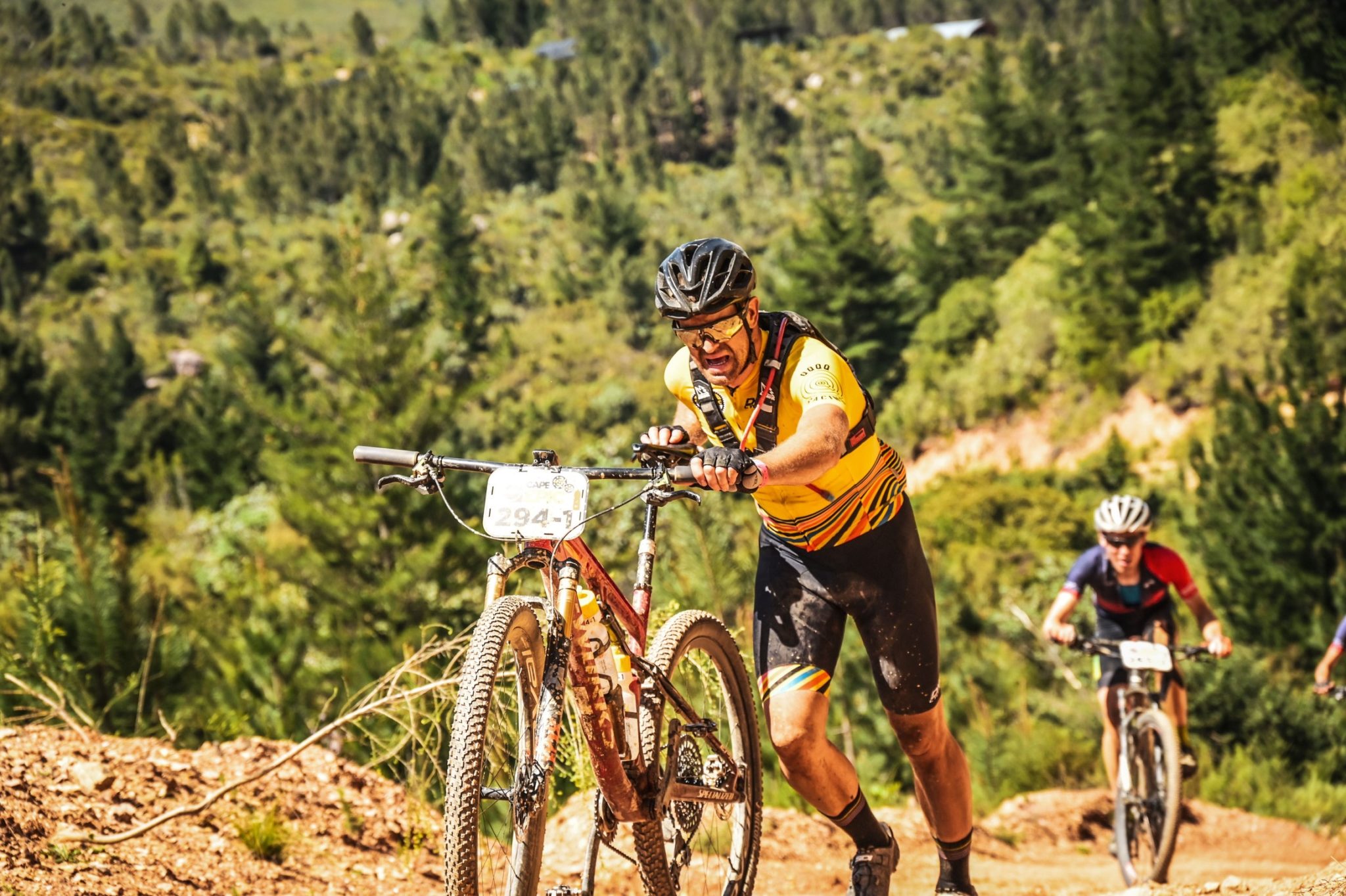
Stage 5 was the Queen Stage, although they had two of those beauties. Coined the Park City P2P stage, thrown right in the middle of an 8-day stage race. It consisted of 84km (52 miles) and 2900m (9514 feet) of climbing. It was either going straight up or straight down, just like most of us like it. We all wrecked throughout the race, but this was a bad one for me. I wrecked hard twice on this stage, the only wrecks I had all week. The first one occurred as I came down on my upper shin and knee, and after 15 minutes of riding, that subsided.
Towards the end, I then came down on a slick dirt road going over 25mph. Adam came around the corner and saw me sliding down the dirt road in a complete yard sale. He took the lead and helped me get my wits back together. This instance was one where the power of a team came together, something that became evident throughout the race.
Towards the end, I then came down on a slick dirt road going over 25mph. Adam came around the corner and saw me sliding down the dirt road in a complete yard sale. He took the lead and helped me get my wits back together. This instance was one where the power of a team came together, something that became evident throughout the race.
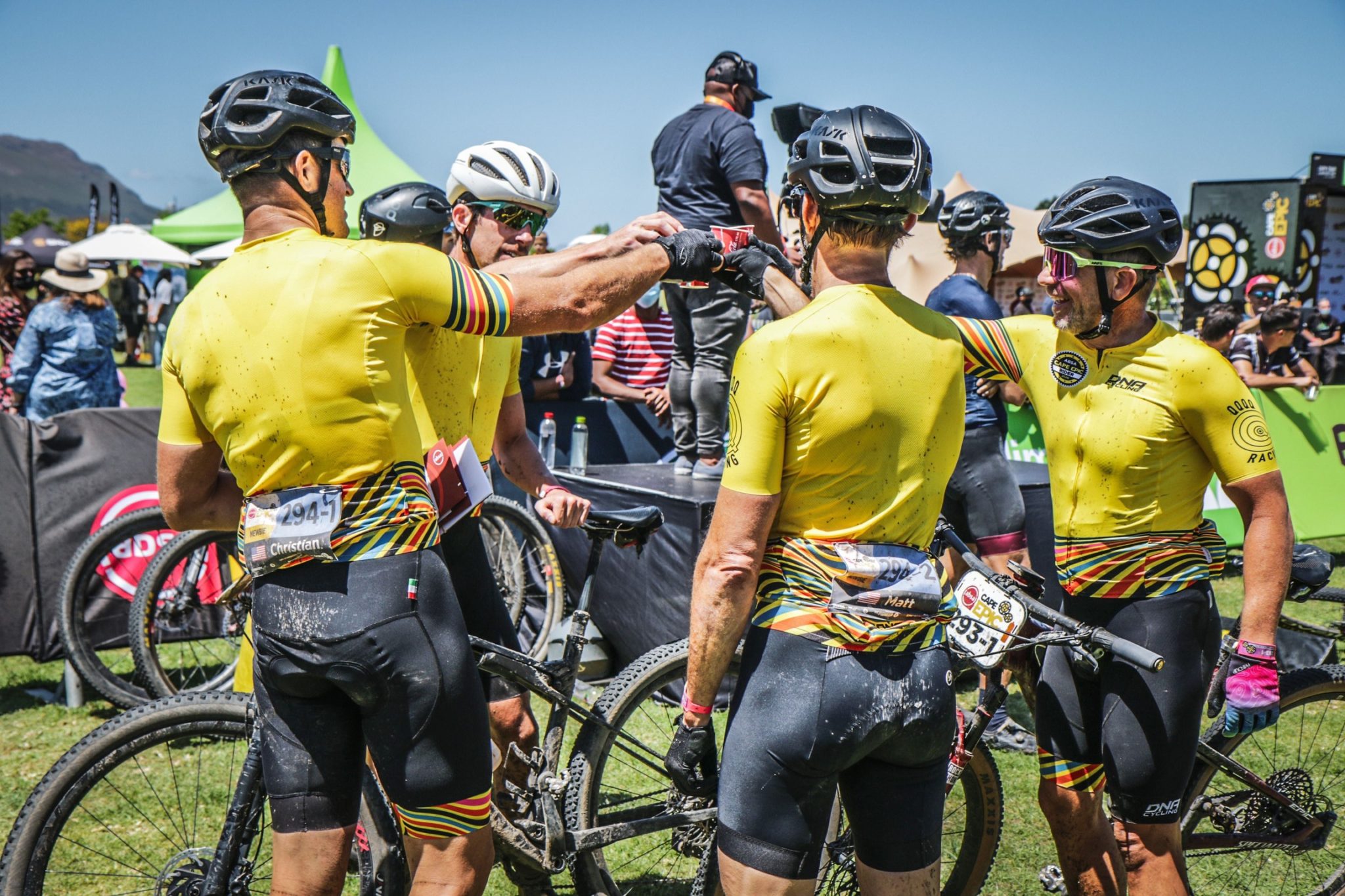
Absa Cape Epic, what an event! One that none of us will forget and we hope inspires others to go take on “The Race That Measures All.” DNA Cycling designed the kits, and oh boy did they stand out! They nailed the design with colors and patterns that mimicked the vibe of the event and landscape, while still making us get noticed. and they were perfect for a race in South Africa. We ended up wearing the race day jersey for aerodynamics and comfort and settled on the elite bib short because we knew we would want the 6+ hour chamois, a tried and true fit for multiple long, hard, wet days in the saddle.
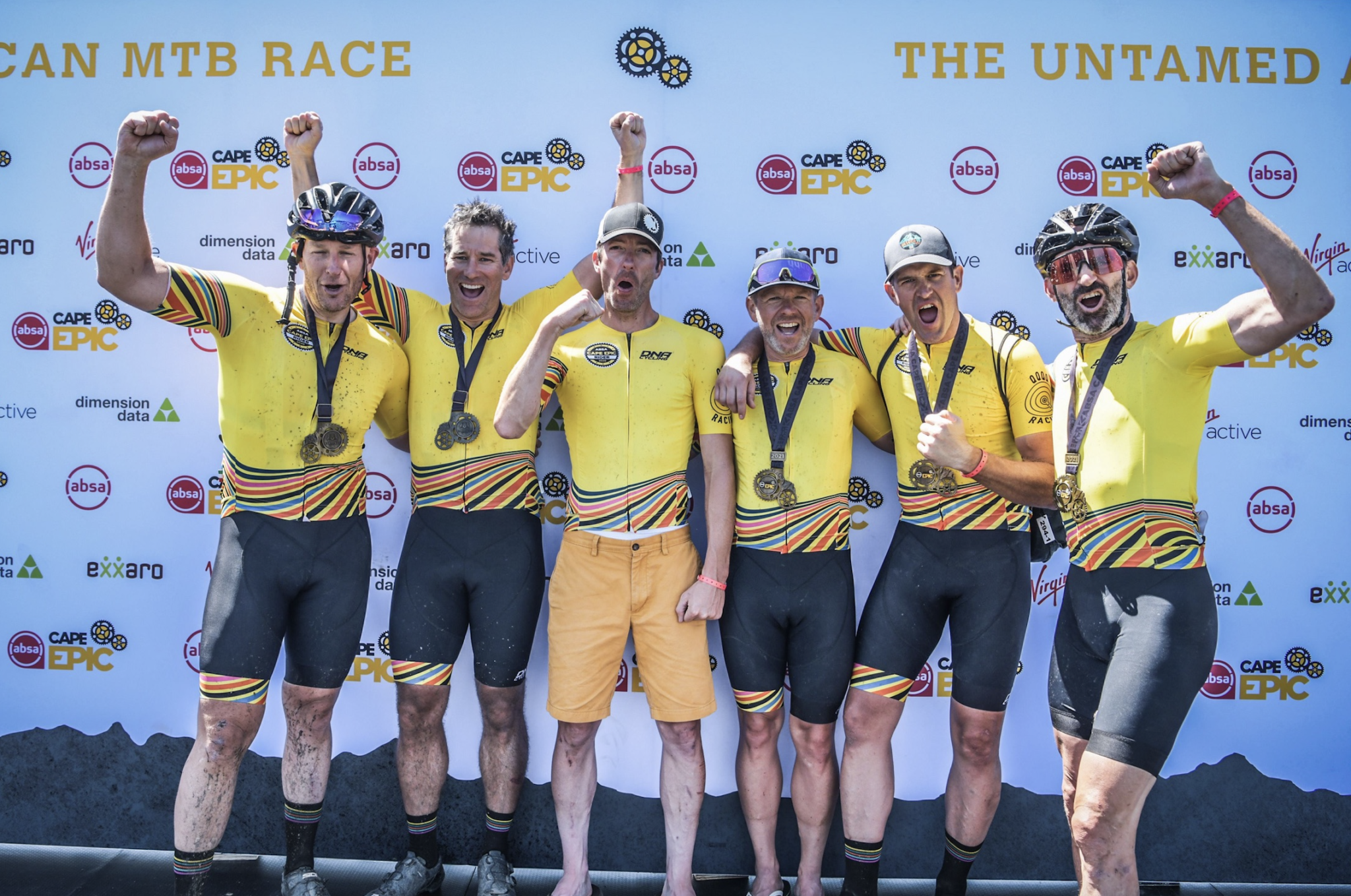
If you want to see a well-organized event, this is the one to investigate. From aid stations to announcers to volunteers to helicopters, you name it. They even power-washed our bikes after each stage, which proved to be a necessity. If you like riding through vineyards and mountains, down flowy single tracks, up and over terrain which reminds you of Southern Utah (for eight straight days at race pace), then this is the event for you!! I mean, if you are into that type of thing.
Recap by: Millard Allen aka Mills Pablo


